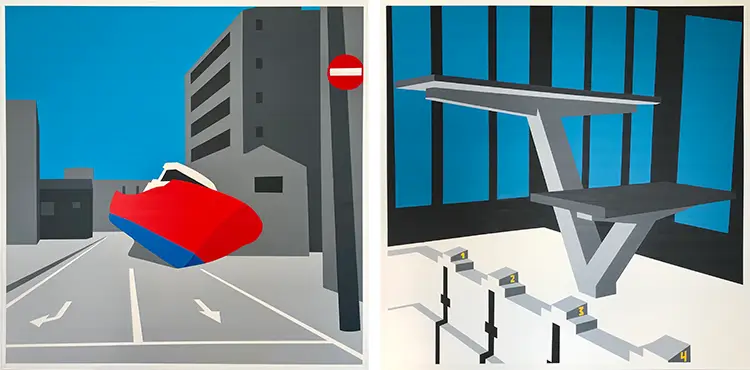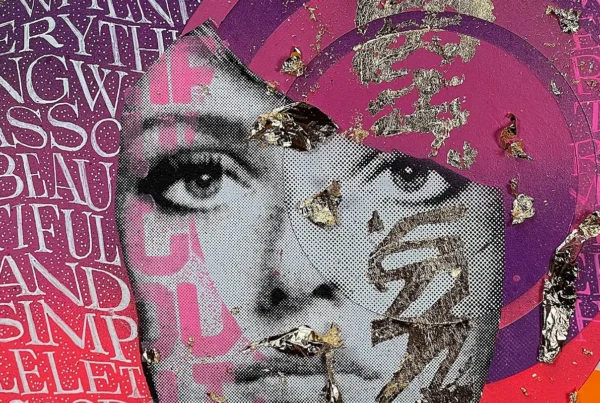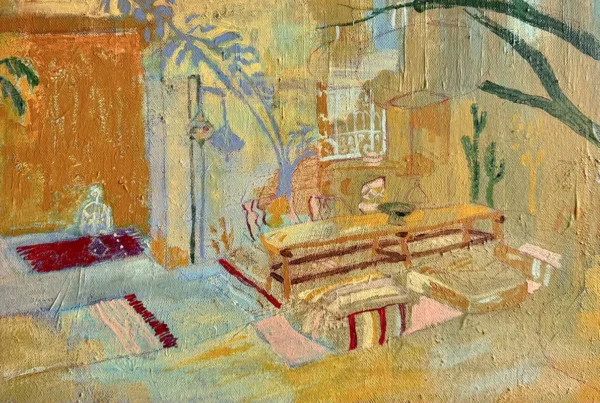“Art naturally emerged as a way for me to work with my hands, to shift the pace, and above all, to leave a trace.”
A Compulsion to Create in a Fast-Moving World
Born and based in Lausanne, Switzerland, Greg Vorpe is a visual artist whose path to creativity followed an unconventional arc. His initial career took root in Human Resources and Operations, areas known for structure, logic, and people management. But over time, the mechanical rhythm of these roles left Vorpe seeking something tactile and enduring—something to balance out the pace of his professional life. That need grew into a desire to craft work that was not just visually resonant, but deeply reflective. Art became his way of slowing time, of working deliberately with his hands in a world increasingly shaped by screens and automation.
Vorpe’s dual life—straddling both artistic and operational pursuits—has become more than a practical arrangement; it is a symbiosis. This duality doesn’t dilute his creative process but enhances it, enabling him to pull inspiration from structured problem-solving while giving him the freedom to disrupt norms through visual expression. The blurred line between his personal and professional experiences offers fertile ground for exploration and invention. It also keeps his art honest, grounded, and relevant, infusing each piece with the quiet tension of a life lived between two seemingly opposite worlds.
His artistic journey began not with images, but with words. In 2010, Vorpe published Faits D’Hiver, a 200-page novel built over five years of intermittent writing. The book set the foundation for his creative discipline—fragmented yet persistent, humorous yet layered. Eventually, his focus shifted from text to texture. In 2018, feeling the close of one chapter in his professional life, Vorpe traded his pen for a paintbrush. What began as experimentation quickly evolved into a full-fledged practice. Exhibitions followed, bolstering his confidence and driving him to refine his visual language. The act of creating became not just a new outlet but a necessary transformation.

Greg Vorpe: Crafting Reflection Through Repetition
Vorpe’s distinctive style occupies a unique space at the intersection of modern pixelation and classic mosaic structure. His works are built through repetition and density, often composed of thousands of tiny marks or elements that collectively construct a larger image. This layering technique is not only aesthetic; it serves a conceptual purpose. The act of repeating, of building slowly and deliberately, becomes a form of meditation—a response to mass production, digital overload, and the emotional implications of living in a data-saturated society. His pieces often ask the viewer to step closer, both literally and metaphorically, in order to grasp their full meaning.
The themes that thread through Vorpe’s body of work are urgent and deeply contemporary. He confronts issues such as ecological fragility, the disintegration of social contracts, and the delicate balance of modern systems. But rather than present them as overt warnings, he filters these concerns through an artistic language that invites curiosity before confrontation. His works provoke questions rather than dictate answers, allowing viewers to engage with difficult subjects through the lens of visual intrigue. The emotional weight of his pieces is matched by their visual harmony, with message and form coexisting in careful tension.
A prime example of this approach is J’accepte, a large-scale piece that replicates the full terms and conditions of the iPhone’s operating system—around 31,000 characters—individually hand-stamped in India ink. The work’s centerpiece is a blank void revealing the titular phrase, “J’accepte,” capturing the passivity of consumer consent in the digital age. This piece holds particular personal significance for Vorpe, not only because it was his first creation but because it symbolized a turning point: the moment he accepted art as a serious endeavor. Exhibited internationally in Rome and Miami and now part of a private collection, J’accepte remains a cornerstone in his portfolio, encapsulating both his technical rigor and conceptual depth.
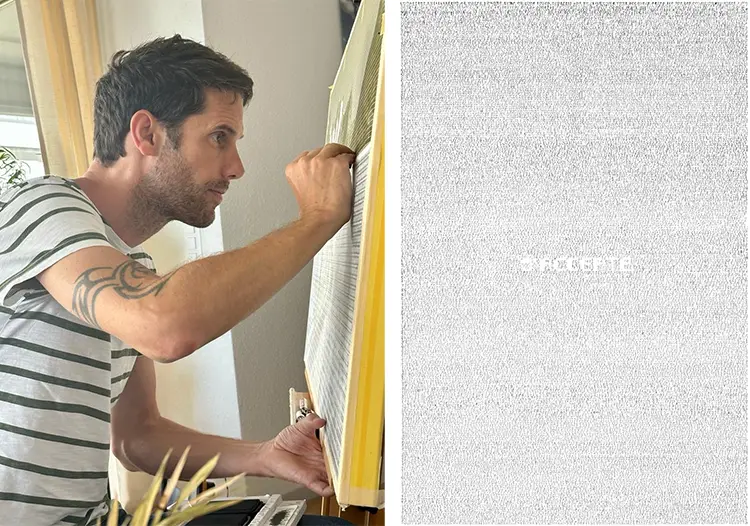
Where Creativity Resides: Between Repetition and Improvisation
Vorpe’s home functions as his workshop, gallery, and sanctuary, creating a continuous loop between domesticity and creation. This integrated space supports his artistic rhythm, which leans heavily on techniques that require extended periods of repetitive action. Rather than rely on long, uninterrupted stretches, he prefers a fragmented workflow—ideal for techniques like hand stamping or layered painting. The proximity between life and work allows for an organic creative process, where inspiration can be acted upon in real time, and creative momentum is less likely to dissipate between obligations.
Distractions are inevitable in a home-based studio, but Vorpe doesn’t see them as obstacles. Instead, he embraces them as potential entry points into new ideas. The unpredictability of everyday life often introduces unplanned elements that can influence his creative direction. Whether it’s an object left on a table or a conversation overheard, such moments become part of a broader sensory input that eventually finds expression in his work. In this way, his process is both methodical and improvisational, a blend that mirrors the complexity of the subjects he addresses.
Over the years, Vorpe has explored five main artistic methods: India ink stamp repetition, acrylic painting with adhesive tape, plastic granulates, paper collage, and marquetry in wood. While he now gravitates more consistently toward stamping and acrylic, he remains open to other materials and approaches. His resourcefulness is matched by a strong sense of environmental responsibility—favoring reclaimed materials and low-waste practices. One such project involved transforming packaging cardboard into a shark-shaped lamp, exemplifying his commitment to sustainable creativity. This openness to diverse mediums reflects not only technical versatility but a refusal to place rigid boundaries around the creative process.
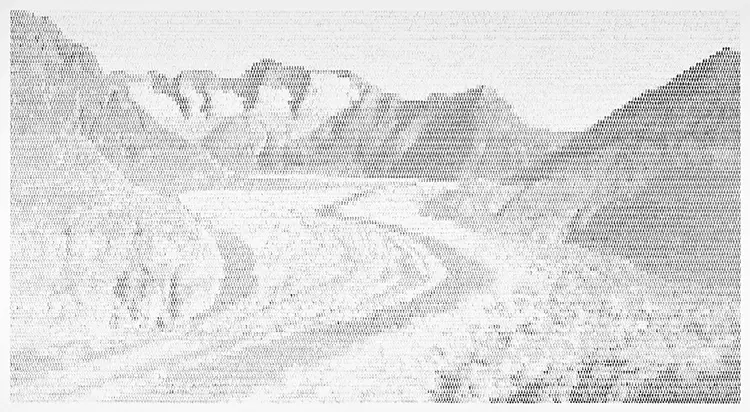
Greg Vorpe: Obsession, Authenticity, and the Murals Yet to Come
Vorpe’s greatest influence is not a single artist but an entire philosophy of making: Art Brut. This movement, rooted in unfiltered expression and driven by compulsion rather than convention, resonates deeply with him. Its embrace of raw, obsessive creativity mirrors his own drive to repeat, accumulate, and build images layer by layer. The spontaneous yet committed ethos of Art Brut allows Vorpe to remain connected to the emotional core of his practice, pushing back against the polished detachment often associated with contemporary art scenes. He finds truth in the imperfect and beauty in the obsessive.
This influence reveals itself in the way he approaches both concept and craft. His work is never purely decorative; each piece is a byproduct of internal reflection, shaped by a near-ritualistic engagement with materials. The process of creation is as important as the final result. Every repeated stamp, every carefully applied strip of tape or layered pigment, carries weight. It is this dedication to the act of making—the hours, the monotony, the quiet intensity—that brings an unmistakable authenticity to his work. Viewers sense not just what they are looking at, but how it was made and why it matters.
Looking ahead, Vorpe envisions expanding his practice into larger-scale projects, specifically indoor murals that challenge him to translate his intricate techniques into grander compositions. Whether installed in a shop or a museum, such a work would mark a significant evolution—scaling up his process while adapting to spatial and contextual constraints. The prospect excites him, not just for its artistic potential, but for the opportunity to explore new limits and reimagine the relationship between surface, viewer, and idea. It would be a continuation of everything his art already is: obsessive, intentional, and quietly radical.
